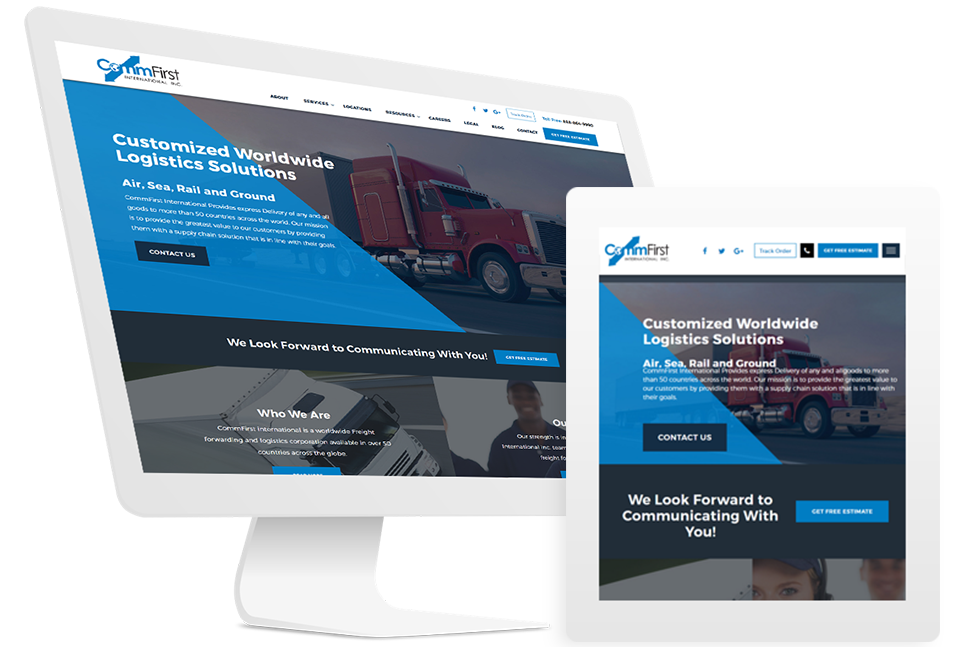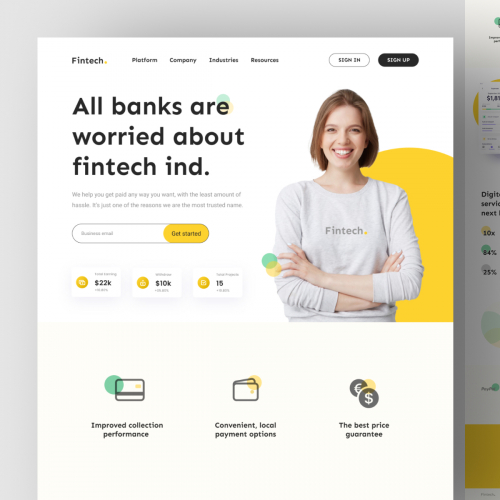Affordable Website Design Packages for Small Businesses
Wiki Article
Leading Tips for Developing an Impactful Web Site Layout That Converts
To accomplish this, one have to take into consideration a variety of elements, including understanding the target audience, focusing on user experience, and optimizing for mobile systems. The strategic use of compelling call-to-actions and a well-defined aesthetic pecking order plays an important role in leading individuals with their journey.
Understand Your Target Audience
Understanding your target audience is essential to effective web site design, as it prepares for developing an engaging customer experience. Recognizing that your individuals are, including their demographics, choices, and behaviors, allows developers to tailor the website's content, design, and functionality to fulfill details requirements.Conducting thorough marketing research is important in this procedure. Surveys, meetings, and analytics can offer important understandings into user expectations and discomfort points. By assembling this data, designers can develop individual personas that represent different segments of the target market, guaranteeing that layout choices are educated and pertinent.
Additionally, comprehending the target audience assists in choosing ideal layout aspects such as color pattern, typography, and imagery that resonate with customers. An internet site that talks straight to its target market promotes a sense of link and trust fund, motivating longer brows through and higher conversion prices.
Eventually, a user-centered strategy to web site style not only improves user fulfillment but also supports service objectives by driving interaction and loyalty. By prioritizing the requirements and preferences of the target audience, a web site can efficiently serve its purpose and achieve preferred results.
Prioritize Individual Experience
To improve the total performance of a web site, prioritizing user experience (UX) is necessary (Website Design). A properly designed UX makes sure that site visitors can navigate the website effortlessly, discover details swiftly, and involve with content meaningfully. This causes boosted individual satisfaction and higher conversion ratesBegin by carrying out intuitive navigation. Menus ought to be practically structured, permitting users to situate essential areas of the website with marginal effort. Consistency in layout aspects, such as color schemes and typefaces, cultivates familiarity, which is crucial for preserving customer interaction.
In addition, take into consideration the loading speed of your web site. A delay of simply a couple of seconds can cause considerable drop-offs, as users are less most likely to wait for a slow-loading page. Improving photos and enhancing code can boost efficiency and retain visitors.
Furthermore, clarity in content presentation is vital. Usage succinct, engaging language and separate text with visuals to enhance readability. By focusing on user experience, you not only develop an extra delightful setting for site visitors but also enhance your brand name's reputation. Inevitably, a focus on UX is a financial investment in the lasting success of your website.
Maximize for Mobile Tools
Maximizing for smart phones is essential in today's electronic landscape, where an enhancing number of individuals accessibility sites with smartphones and tablets. A mobile-friendly style not just boosts individual experience however also plays a considerable function description in enhancing online search engine rankings. To accomplish this, it is necessary to adopt a responsive design that instantly changes to numerous screen sizes and alignments.
Loading rate is an additional vital factor; mobile users are commonly much less individual and anticipate quick accessibility to information. Optimize pictures and leverage web browser caching to improve performance. Lastly, examination your internet site on multiple tools and screen resolutions to recognize and remedy any kind of prospective usability problems. By focusing on mobile optimization, you guarantee that your internet site continues to be competitive and properly involves a wider target market.
Use Compelling Call-to-Actions
A web site's performance often depends upon its ability to assist site visitors towards wanted activities, making engaging call-to-actions (CTAs) crucial elements of layout. CTAs work as the pivotal factors that guide customers to involve with the site, whether that indicates buying, signing up for an e-newsletter, or downloading and install a source.To develop reliable CTAs, clarity is extremely important. Usage succinct language that plainly interacts the activity you desire the individual to take. Expressions such as "Start," "Register Free," or "Shop Now" not just convey necessity but also get rid of obscurity. The placement of CTAs is equally crucial; they must be purposefully positioned throughout the webpage to guarantee they are quickly noticeable, especially in high-traffic locations.
Additionally, consider utilizing directional cues, such as arrowheads or images, to guide customers towards these switches. By concentrating on these aspects, organizations can substantially boost user involvement, driving conversions and inevitably achieving their internet site's goals.
Concentrate On Visual Pecking Order
Reliable site layout depends heavily on a well-structured visual power structure that overviews customers her comment is here through web content effortlessly. By organizing elements in a fashion that prioritizes details, designers can improve individual experience and assist in decision-making. This entails utilizing size, shade, comparison, and spacing strategically to draw focus to one of the most vital elements of a web page.Using larger typefaces for headings and subheadings develops a clear distinction in between various areas, allowing users to scan material easily. look at here Furthermore, employing contrasting shades for switches and calls-to-action can record individual interest and encourage communication. Whitespace is an additional essential part; it protects against clutter and enables users to concentrate on crucial messages without disturbances.
Photos and graphics ought to match the text while likewise sticking to the established hierarchy, enhancing the total message (Website Design). Uniformity in style elements, such as shade systems and typography, additional reinforces the visual hierarchy, making navigating instinctive

Conclusion
To conclude, efficient website design requires a comprehensive understanding of the target market, prioritization of individual experience, and mobile optimization. The critical use compelling call-to-actions and a well-defined aesthetic power structure even more boosts customer involvement. By carrying out these principles, websites can attain greater conversion prices, guaranteeing that style elements not only attract visitors but additionally promote smooth navigating and communication. Inevitably, a well-executed site design works as a vital component in driving user actions and attaining business goals.Report this wiki page